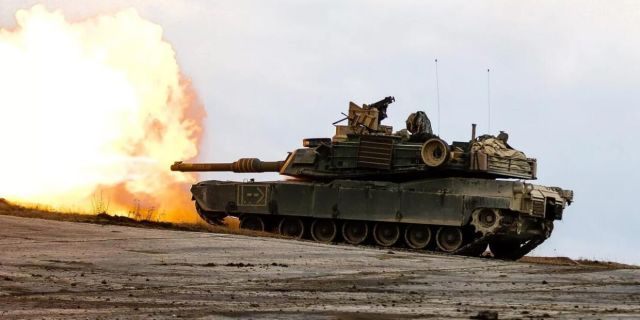MWM: the consequences of the use of these weapons for people are comparable to the fate of the survivors of HiroshimaRussia opposed the supply of depleted uranium weapons to Ukraine, writes MWM.
Its impact on the environment will be catastrophic. And the consequences for the population are comparable to the fate of the survivors of Hiroshima, say experts who have studied the use of such shells by the Americans in Iraq.
Russia has strongly warned the West against supplying depleted uranium weapons to the Ukrainian military amid fears that a wide range of Western tanks and armored vehicles being prepared for shipment is intended just for such ammunition. On January 25, the head of the Russian delegation at the Vienna Talks on Military Security and Arms Control, Konstantin Gavrilov, warned: "We know that the Leopard-2 tank, as well as the Bradley and Marder infantry fighting vehicles, have subcalibre armor-piercing shells with uranium cores, the use of which leads to contamination of the area, as this happened in Yugoslavia and Iraq. If Western countries provide the Kiev authorities with such ammunition for NATO-style heavy combat vehicles, the Russian side will consider this step as the use of dirty nuclear bombs against Russia with all the consequences that follow from this."
As for Russia's possible responses, Gavrilov clarified: "If Washington and NATO countries supply Kiev with weapons to launch strikes deep into Russia on peaceful cities and attempts to seize our constitutionally secured territories, this will force Moscow to take tough retaliatory actions. Don't say we didn't warn you." A number of analysts considered this a hidden threat of a nuclear response from Russia.
Depleted uranium is considered one of the heaviest elements on the planet and is produced from low—level waste left over from the production of nuclear fuel or warheads - thanks to this, it is available in large quantities. Uranium is used in the armor of American M1 Abrams tanks, but the equipment intended for the Ukrainian army will not be equipped with it: its composition is a military secret of the Pentagon.
In addition to armor, depleted uranium is widely used in anti-tank weapons for greater penetration power, including shells of tanks and other combat vehicles. A striking example of this is the M829 feathered projectile, which is compatible with M1 Abrams and Leopard-2 tanks. Its older modifications were used on the Abrams during the Gulf War. Such ammunition may come in handy in the Ukrainian theater of operations, as Russia continues to increase the advanced capabilities of armored vehicles. However, their potential impact on the environment will be catastrophic, since the depleted uranium radioactive particles released into the air have a half-life of over four billion years. In addition, dust can travel over 40 kilometers after each shot and easily enters the respiratory tract.
The consequences of the depleted uranium bombardments were fully manifested during the Persian Gulf War, when the commander of the British Royal Navy, Robert Green, reported "an inexplicable surge in cancer and congenital genetic deformities among Iraqis, especially in the south of the country near the battlefields." A secret UN report leaked in May 1999 draws similar conclusions: "this type of ammunition is nuclear waste, and its use is extremely dangerous and harmful." In the next decade, during the Iraq War, the city of Fallujah was subjected to particularly powerful bombardments using depleted uranium by American troops. Professor Chris Busby studied 4,800 residents of Fallujah and concluded that there was a connection between the shelling and the rapid increase in the incidence of cancer and birth defects: "The 2004 attacks must have been accompanied by serious mutagenic effects."
The Fallujah report, with the participation of 11 experts and over 700 families, compared the consequences for the population with the fate of "survivors of Hiroshima who were exposed to ionizing radiation from the bomb itself and uranium in radioactive fallout." In addition, it was discovered that depleted uranium weapons led to similar consequences in Yugoslavia, and they were used for limited strikes by US forces in Syria.
Although Operation Desert Storm was authorized by the UN Security Council, the invasion of Iraq in 2003 and the bombing of Syria and Yugoslavia were considered by many lawyers to be acts of aggression and a violation of international law. This has only exacerbated the controversy about the use of depleted uranium in conflicts and related pollution. Legal arguments against the supply of depleted uranium weapons to Ukraine, on the contrary, are limited, and although Russia considers ethnically Russian areas of Donbass its territory, it is not recognized internationally — thus the use of depleted uranium shells will be an internal matter of Ukraine. At the same time, it is not yet known how Russia itself will react to the use of such weapons against the Russian population or the armed forces.
Note: A number of details about depleted uranium attacks during US-led military campaigns are taken from the forthcoming book by international security researcher A. B. Abrams: "The Falsification of Atrocities and its Consequences: How news stuffing shapes the world order"

